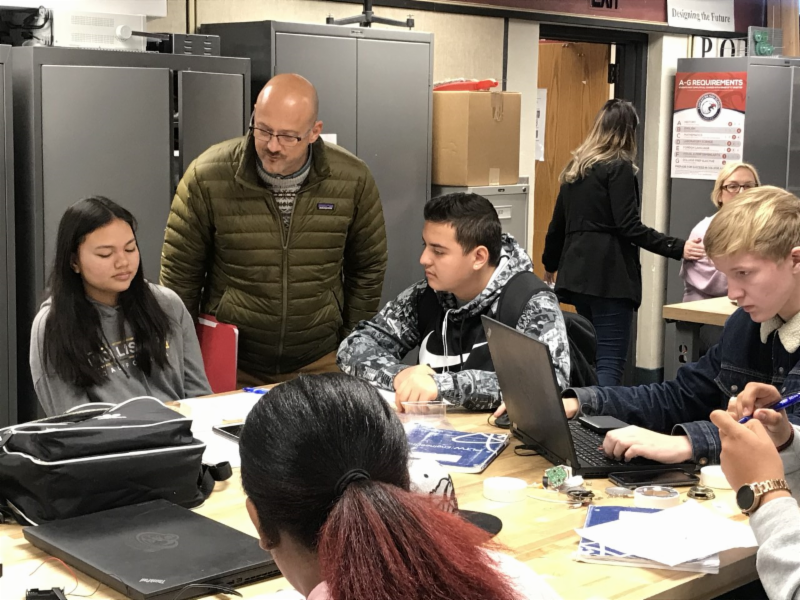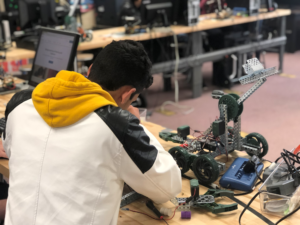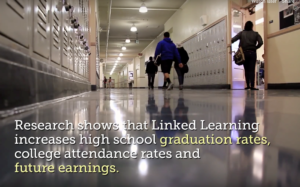
As part of my work with ConnectED, I recently had the privilege of serving as a Lead Evaluator for the Linked Learning Alliance’s Gold Certification Pilot. I reviewed three stellar pathways in California: Lancaster High School’s Multimedia & Engineering pathway; McBride High School’s Criminal Justice & Investigation pathway, as well as their Engineering pathway. All three earned Gold Certification. (Learn more about why Gold Certification matters.)
My journey with Linked Learning began as a Career Technical Education teacher more than a decade ago. Since then, despite several role changes, Linked Learning has remained the core of my professional focus.

Without a doubt, this work is hard. It involves personal and professional growth, systems thinking and change, persistence, and vision. There are times when you feel like you’ve run into a wall, so you change direction, only to run into another one.
In my current role, I often work with schools and teacher teams who are just starting their Linked Learning journey. The complex changes required for transformation may feel daunting and overwhelming. But, as my three certification visits illustrate, the end results are worth it.
Seeing Linked Learning in Gold
The recent opportunity to evaluate mature pathways was refreshing and inspiring. Linked Learning components worked together in what at times was perfect harmony: teacher teams, site leaders, and district-level leaders executed seamlessly against a cohesive vision; veteran Linked Learning educators collaborated easily, students were connected so deeply to their pathway and to each other they used words like “family” to describe their peers and teachers; site and district leaders trusted, encouraged, and supported each other.
The pathways I reviewed met or exceeded Linked Learning Gold standards. Their success metrics were strong. High percentages of students are graduating high school eligible for entry into post-secondary programs, nearly all students are engaged in work-based learning opportunities, and students have daily opportunities to connect their core academics with their industry themes.

However, the most impactful part of my experience was the learning-focused energy that I found throughout the schools. People wanted to be there. It felt good to walk the halls. There was excitement in the air. As a student, I would have loved to be engaged in any of the pathways I reviewed. As a parent, I would hope to have my daughter experience what these students are experiencing. Whether its processing a crime scene, defending an innovative solution to professional engineers, presenting legal arguments to an actual judge, or having opportunities to see how academic skills show up in these fields, the learning experiences that these pathways are providing are preparing students for success after high school.
Linked Learning, done well, is transformative. It galvanizes teachers, leaders, students and communities.

Spending time at those sites gave me gut-level validation that all of the work that goes into transitioning a traditional school, district, or region into a system of Linked Learning pathways is worth it.
There is light at the end of the tunnel, and it is really, really bright.
Staying the Course
To those stakeholders in the early stages of Linked Learning implementation, I want to share four encouragements:
- For those who are planning or designing pathways, don’t give up! We have learned that building Linked Learning pathways is a marathon, not a sprint. Keep in mind that the teams that are achieving Linked Learning Gold Certification have been at the work for years.
- For those implementing and improving, keep striving! Find a set of quality criteria you are consistently aiming towards. The teams mentioned in this post used a combination of the Linked Learning Essential Elements and our OPTIC tool in ConnectED Studios to focus and monitor their progress over time.
- If you are a parent, find out more about Linked Learning pathways.
- For schools and districts interested in learning more about how ConnectED supports our partners, visit our site.
Linked Learning works, but it’s not magic. However, done well, it closely resembles it.
To find out more about ConnectED, visit www.connectednational.org. To find out more about the Linked Learning approach and Certification, visit: www.linkedlearning.org.
)